San Agustin and Las Lajas – on our way to Ecuador
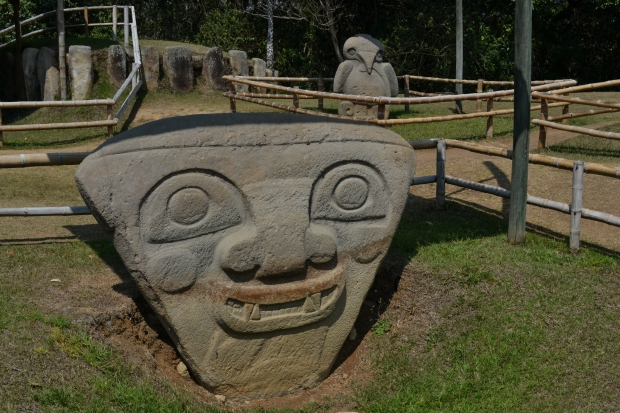
Statues at San Agustin Archaeological Park
Leaving San Andrés and Tierradentro we continued our tour of pre‑Hispanic Colombia and traveled to San Agustin and its archaeological park.
It took us a full day to get from San Andrés to San Agustin: first we took a converted ute to La Plata, then a bus to Pitalito and then another converted ute to San Agustin, all small towns in the Colombian Andes. When we finally got to our final destination, we looked for accommodation and were rewarded with a really nice room at La Casa de Francois, a beautiful hostel up on the hillside overlooking San Agustin. It also seems to be where all the French tourists stay (we suppose the name has something to do with that) and we enjoyed the company of the many French backpackers and tourists at this hostel.
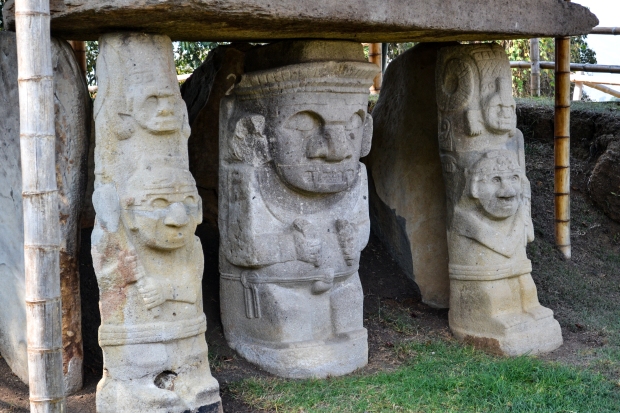
Statues at Mesita A, San Agustin
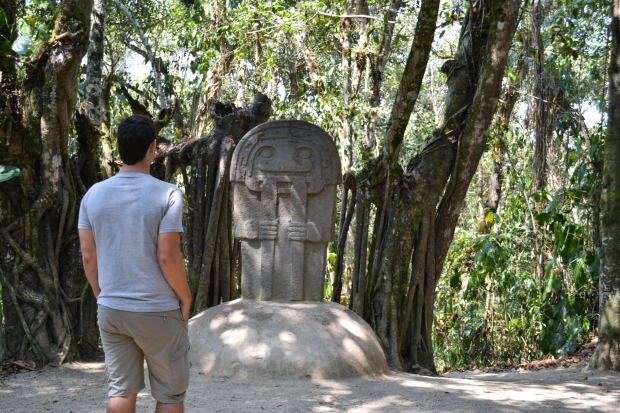
Checking out the statues at the Bosque, San Agustin
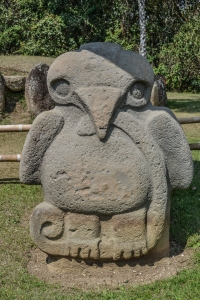
One of our favourite statues, Mesita B
San Agustin is a much more popular tourist destination than Tierradentro. People come here to see the over 500 statues that have been found in this region, known as the Upper Magdalena region. People have lived in this region for about 2000 years, and the burial chambers and sculptures date from between the 6th and 14th Centuries. These statues were sculpted from volcanic rock and take many forms, often representing animals, humans or both, sometimes with masks and headdresses. Some of these statues were buried in tombs, others were arranged as custodians in the ceremonial chambers, while others acted as the tomb’s columns.
We only had one full day in San Agustin, so we took a collectivo to the archaeological park soon after it opened and spent 3 hours visiting the trail of statues. The San Agustin Archaeological Park was established in 1937 and has a number of groupings of statues. Our favourites were in Mesita B, where the statues have an incredible amount of detail and examples of different styles of sculpture. The walk was mostly flat and the paths well maintained – nothing like the challenging hike at Tierradentro!
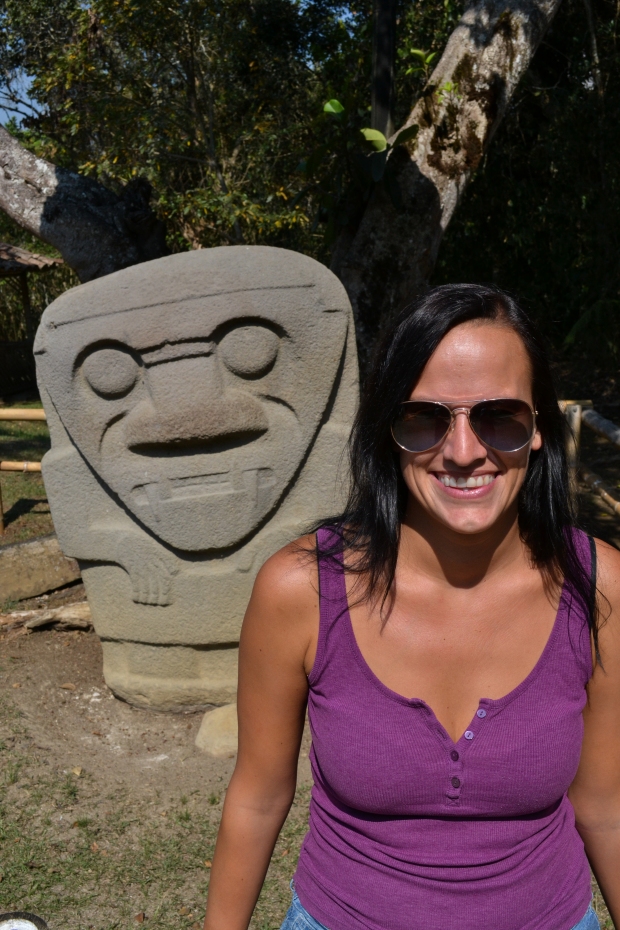
Photo-bombing statue
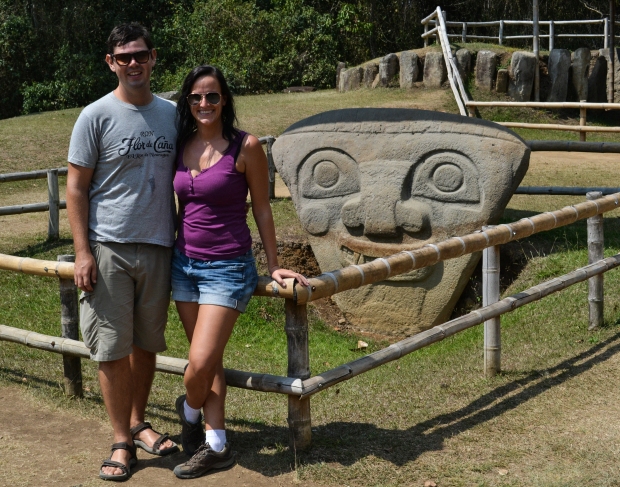
San Agustin Archaeological Park
In the afternoon we went for a walk to two other sites: El Tablón and La Chaquira. These two sites were located at an hour walk from our hostel and were quite easy to get to. The site of El Tablón was not that special in our opinion, it was composed of another few statues that were very similar to many of the ones we had already seen in the Archaeological Park. But the view of the valley at La Chaquira was really beautiful and we spent so much time admiring the landscape that we almost missed the pre‑Hispanic carving we came there to see! La Chaquira is carved into a large rock overlooking the valley and was quite different to the statues; it was worth the walk in the afternoon heat.
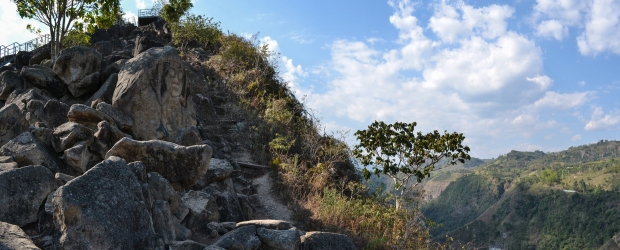
Can you spot La Chaquira?
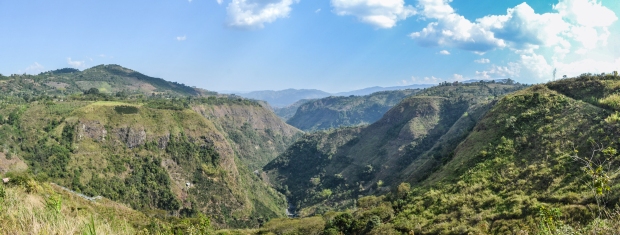
View from La Chaquira
The next day we got up early to start our journey to Ecuador. Our goal was to get to Ipiales, but we knew it was likely we’d have to spend the night in Pasto instead to avoid overnight travel (and night time robberies). Our trip from San Agustin to Pasto was a memorable one to say the least! We took a collective taxi to Pitalito followed by a converted ute to Mocoa. So far so good…
It was the next part of the trip that made us anxious. This road has many nicknames: Trampolín de la Muerte (Trampoline of Death), Trampolín del Diablo (Devil’s Trampoline), Adios Mi Vida (Goodbye My Life)… This was the most direct route to the border crossing we wanted to take to Ecuador (and the only safe border crossing between the two countries), but it was also the most dangerous. It is considered the most dangerous road in the country and one of the worst in South America. Having debated whether to take this route or go back to Popayán and down we decided to risk it after speaking with the owner of La Casa de Francois who said she did the trip all the time and assured us it would be fine.
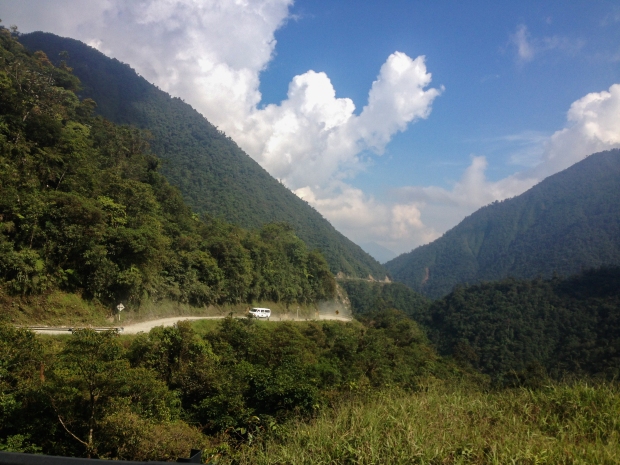
Road from Mocoa to Pasto
And in the end it was fine, but that doesn’t mean there weren’t some nail biting moments and cause for concern. Although it is highly likely that our concern was augmented from having read some horror stories about this road. It twists and winds up through the mountains; the road is not paved and we passed many vehicles with burst tyres; small waterfalls cross the road at several points; the road is often barely wide enough for one car, forcing one party to back up when another vehicle is coming from the other direction; for only half the journey the road has steel rail guards, for the other half of the journey there are only wooden poles with plastic tape between them (sure that will stop a bus from crashing down!) or nothing; we encountered several (cleared) landslides; the entire route had precipitous falls – if our vehicle was to make a wrong turn or if the driver lost control then it would be a steep plummet. And although the scenery was breathtakingly beautiful, we often preferred to stare at the wall next to us than at the views in order to avoid seeing how close the van was to the edge in the curves.
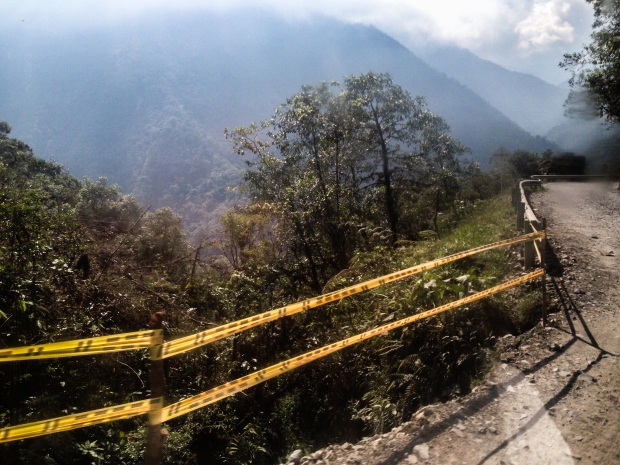
The tape would not have been much protection from the drop…
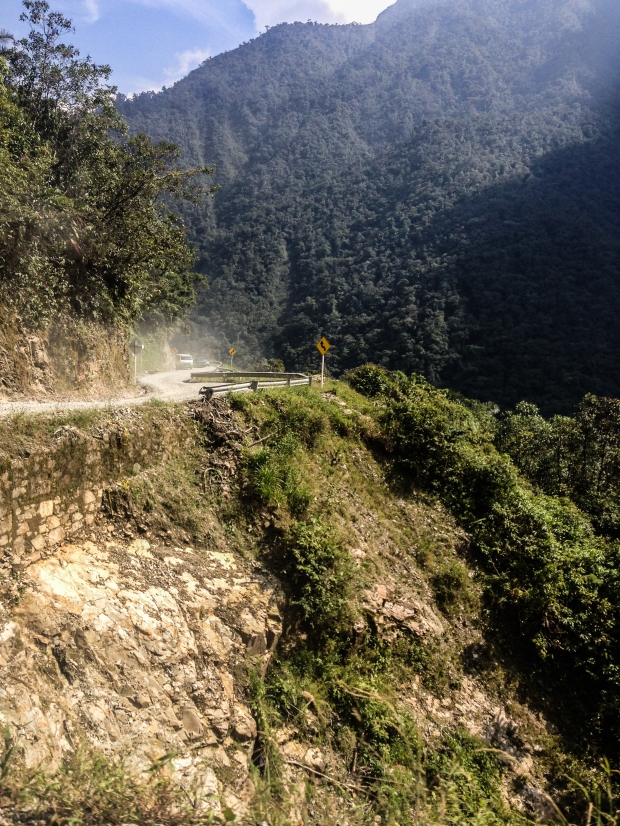
Trampolin de la Muerte
We had two things going in our favour for this trip. First, it wasn’t raining. We would not have gone if it had rained, as those small waterfalls with a rivulet coming over the road apparently turn into a torrent if there has been rain recently. Second, we were in a small van, not in a large bus or truck, which has less manoeuvrability and our driver was driving pretty slowly. We survived the Trampoline of Death, lived to tell the tale, and ended up in Pasto for a night. We had wanted to get closer to the border (and Las Lajas Cathedral) but we ran out of light after 10 hours of travel and it is strongly recommended to avoid travelling at night.
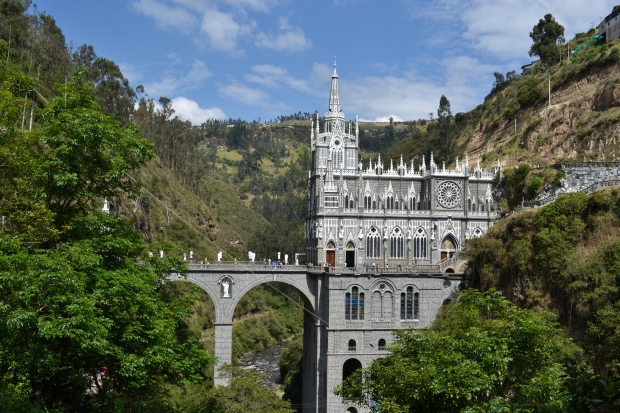
Las Lajas Sanctuary
Early the next morning we took a bus to Ipiales, stored our bags at the bus terminal and took a collectivo taxi to Las Lajas Sanctuary. This Gothic Church – completed in 1949 after 33 years of construction – straddles the Guáitara river canyon 20 minutes from Ipiales and is one of the most beautiful churches we’ve ever seen. It is built into the canyon and part of the church’s wall behind the altar is formed by the canyon rock. The bridge that connects Las Lajas to the other side of the canyon is adorned by white statues of angels playing musical instruments, including the saxophone (which incidentally is a Belgian instrument). On the other side of the canyon, where there are plenty of lookout points and pathways which offer spectacular views of the church.
In 1754 a local woman supposedly saw an apparition of the Virgin Mary at the site of the church during a storm while sheltering between lajas, a local variety of shale. Subsequently this point became an important religious site and prompted the construction of the Sanctuary.
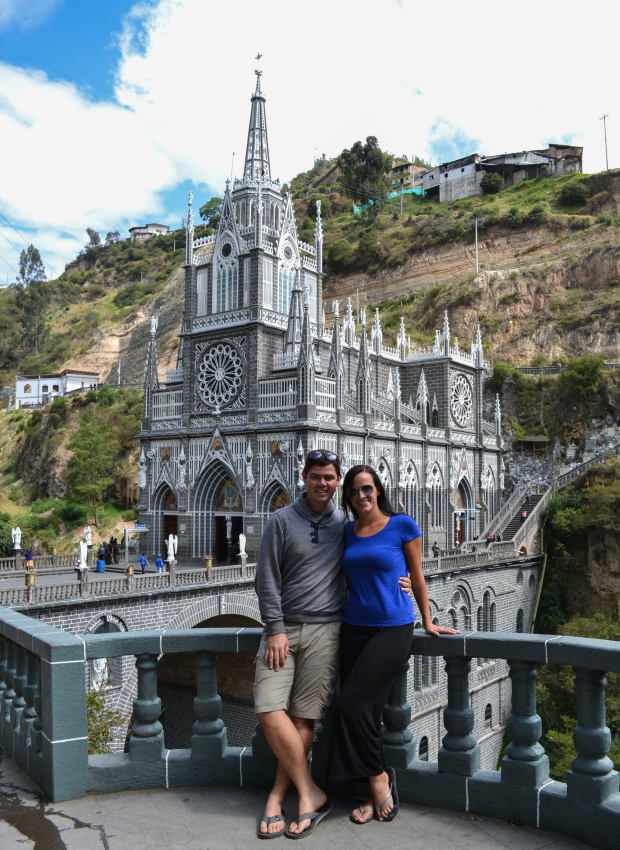
Plenty of viewpoints for this amazing church
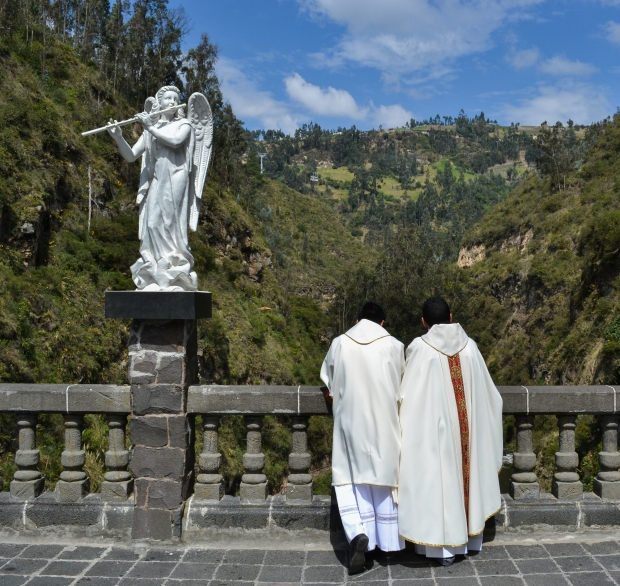
Some of the clergy enjoying the views
We walked inside the beautiful church and saw many members of the clergy speaking with visitors; it seems that a lot of masses are held at this church every day; they even had a guide on attending mass and asking visitors to wait outside for the next mass if one is already underway.
Our visit to this impressive church was a really nice way to end an incredible journey in Colombia. We have enjoyed our time in Colombia tremendously and are already looking forward to our next trip to this gorgeous country. Next we will cross the border into Ecuador and head to Otavalo in time for its famous Saturday market.
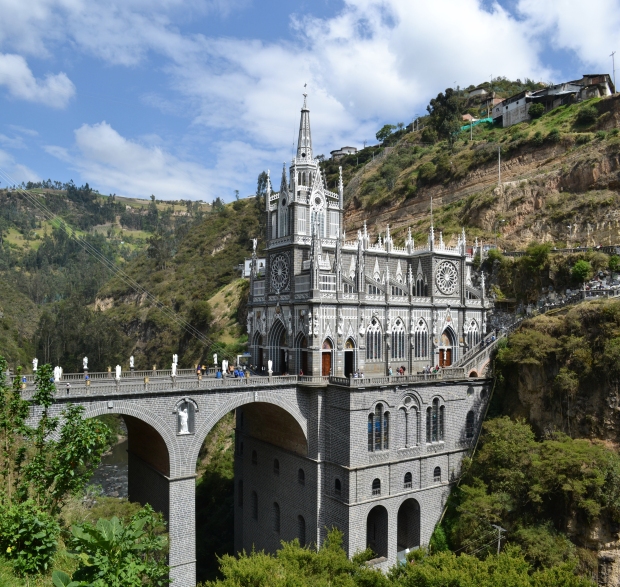
What a sight!
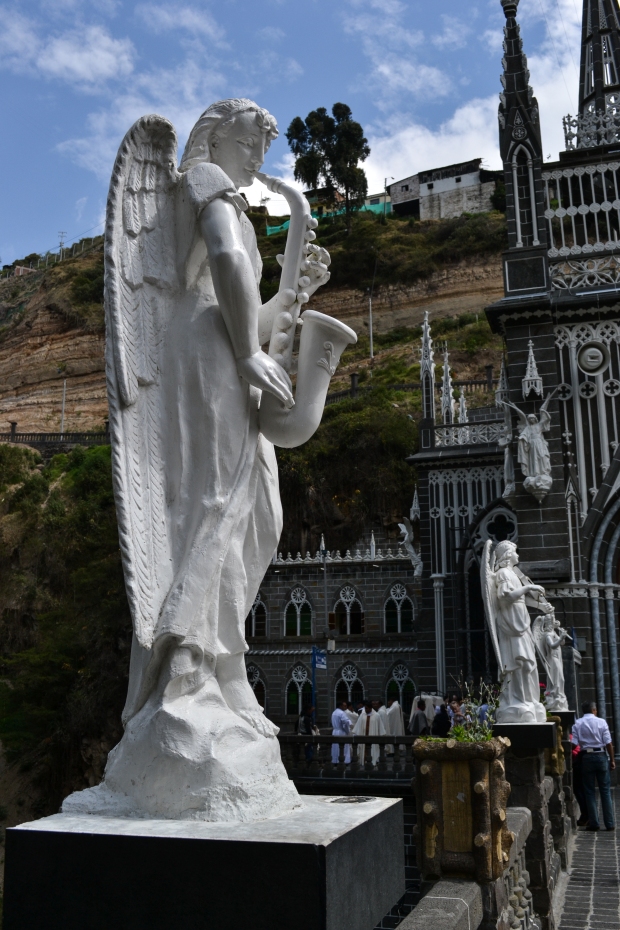
Statues on the bridge crossing the canyon
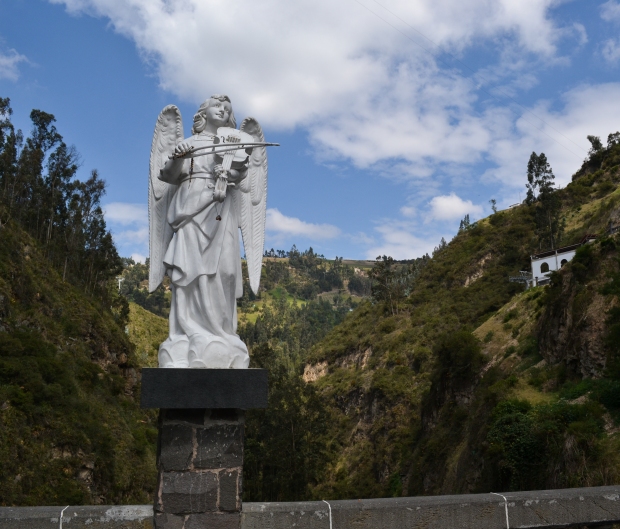
And another statue
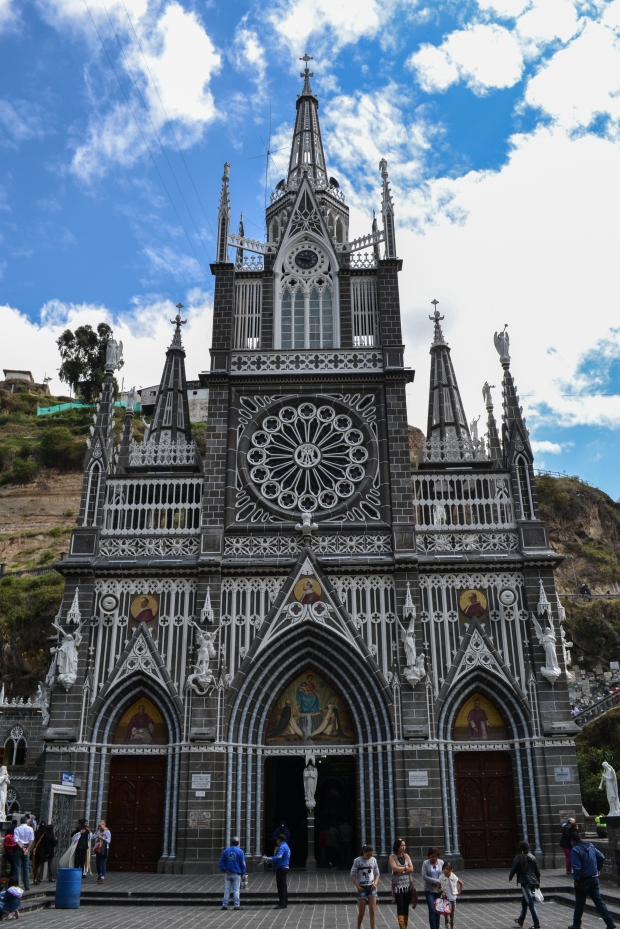
The beautiful Las Lajas Sanctuary


